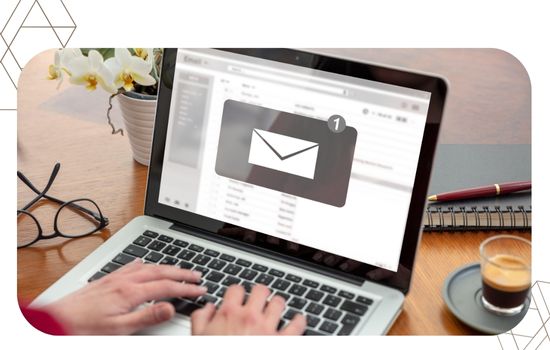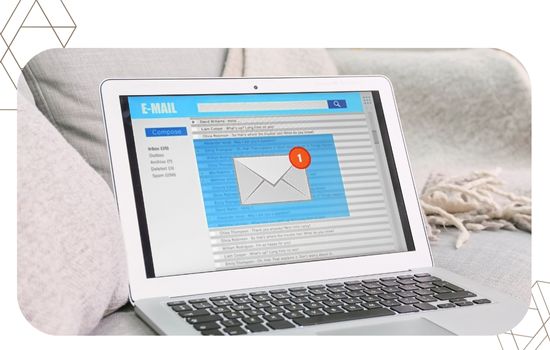Advertisements
This article explores the history and relevance of the first emails sent: how they emerged, what they meant for digital communication, and how they influence us today.

Its technical origins, global expansion, impact on business and personal culture, and what it means for the present and future of electronic messaging are discussed.
Origin and context of email
When you reflect on the first emails sent, you are entering one of the most relevant technological milestones of the digital age.
In 1971, engineer Ray Tomlinson sent a message between two machines connected by the ARPANET network, the predecessor of the Internet, and proposed a new paradigm for communication between computers.
The message was simple, possibly “QWERTYUIOP”, but what was truly relevant was the implementation of the “@” symbol to indicate the recipient’s location (“user@host”).
Advertisements
The practice of sending messages from one machine to another, which already existed in a rudimentary form in the 1960s (users on the same computer), changed radically by allowing communication between different connected systems.
Thus, the first emails sent They were not an act of personal messaging as we know it today, but a technical experiment that opened a crucial path.
A useful analogy: imagine that postal delivery took hours or days, and suddenly someone invented an intercity pneumatic tube that connected cities in seconds.
The first messages through that tube seemed trivial, but what mattered was the channel.
Similarly, the first emails marked the emergence of the channel more than the complexity of the message.
Why are “first emails sent” relevant today?
The phrase first emails sent It not only refers to the past, but also to the foundation of almost all digital communication today. There are three key reasons:
The basis of modern messaging
What began as a network experiment evolved into the global messaging system we use today (emails, chats, notifications).
The protocols, symbols and practices established then continue to influence.
For example, the “@” symbol remains the standard for email addresses.
Impact on the professional and personal world
The use of email expanded rapidly in the following decades: by the 1990s, it had become an essential tool in business, and in personal life as well.
In 1978, for example, the first unsolicited mass email (spam) was sent over the ARPANET, generating sales of USD 13 million.
Today, having an inbox is almost as natural as having a physical mailbox decades ago.
Lessons for digital communication
Analyzing the early stages of email allows us to learn how the technology evolves, how users adapt, and what risks emerge (privacy, message overload, reliability).
If you understand where the system started, you can anticipate where it's going.
Key chronology of the “first emails sent”
To better understand, here is a table with real and documented events:
| Year | Event | Description |
|---|---|---|
| 1971 | Sending the first email between two computers by Ray Tomlinson. | Test message, content forgotten, “@” symbol entered. |
| 1974 | In the UK, email is sent via ARPANET by Sylvia Wilbur. | Expands the international use of technology. |
| 1978 | First documented “spam”: commercial message sent on ARPANET. | Marks the beginning of unsolicited messaging on the network. |
| 1988–1993 | Emergence of commercial clients and webmail. | Email becomes massive and accessible to common users. |
The interesting statistic: more than 75 % of ARPANET communications in 1973 were conducted via email.
Thus, the first emails sent They were much more than technical curiosities: they were part of a radical change in the way we communicate.

Read more: History of the first video games
Two original examples of use that show the value of mail
- Example 1: A consulting firm in Mexico City started its business in 1995 and decided to use email for billing, customer support, and internal communications. Emailing replaces long phone calls and reduces "Didn't you hear me?" errors. Thanks to email, the company can archive conversations and respond more quickly.
- Example 2: A college student in 2024 retrieves a file from a template shared via email with his international workgroup. This remote exchange was only possible because a global protocol was established that comes from the era of first emails sentThe attached file, the “To:” and “CC:” lines are a direct legacy of that era.
How does messaging evolve after the first emails?
After its beginnings, electronic messaging went through several stages:
- Corporate expansion: Companies adopted email as their internal standard, replacing faxes and memos.
- Standards and Attachments: The “From:”, “To:”, “Subject:”, “CC”, etc. fields were implemented, standards we use today.
- Web-interface and mobile: With the advent of broadband Internet and mobile devices, email became ubiquitous.
- Saturation and a new paradigm: it's no longer just about sending emails, but also about managing inboxes, filtering spam, and protecting data. User experience is key.
Rhetorical question: Can you imagine your day without sending or receiving a single email? That would be nearly impossible in the connected world of 2025.
Current relevance and why we should continue paying attention
Although we live in the age of instant messaging, apps, and social media, email remains central for several reasons:
- Professionalism: In corporate environments, the email address remains a universal identifier.
- Persistence: Emails can be archived, searched, and serve as documentary evidence.
- Global reach: You don't have to rely on the same app as another user; email is standard.
- Integration: Modern platforms connect email with automations, CRM, and workflows.
This evolution is based on the legacy of the first emails sentRecognizing that origin allows you to better value the infrastructure you use every day.
What lessons can we learn from the first emails we sent?
- Incremental innovation matters: something that seemed like a technical experiment (a “QWERTYUIOP” message) became a global system.
- Effective simplicity: The first tool only had the basic functions, but it was enough to bring about change.
- User Adaptation: Technology advances, but the real value comes when people adopt it.
- Constantly evolving: today, email coexists with chats, instant messaging, video calls… but it's still relevant.
Practical considerations for your digital strategy
If you manage a business, blog, or send communications, here are some ideas derived from the study of the first emails sent:
- Make sure your email address is professional and recognizable (avoid confusing strings).
- Use clear “Subject” fields: Early emails already had headers that made the content clear.
- Attach only what's necessary and organize your inbox: the efficiency of email lies in the quick connection between sender and recipient.
- Follow good sending practices: segment, personalize, and avoid overwhelming the recipient.
- Value email persistence: archive, automate responses, and keep records.
Read more: Internet: interesting facts that few people know
Conclusion
The first emails sent They represent much more than a technological milestone: they mark the beginning of a way of communicating that has changed humanity.
From Ray Tomlinson's experiment to inbox management in 2025, we've come a long way.
By understanding this origin, you can better leverage email in your personal or professional environment, recognize its value, and adapt your practices to ensure your communication is relevant, efficient, and human.
Frequently Asked Questions
What is considered a “first email”?
The message Ray Tomlinson sent in 1971 between two computers connected by ARPANET is generally recognized as part of an experiment that changed communication.
Was the content of the first email important?
Not particularly: the text was a test, possibly “QWERTYUIOP.” The key was the technology behind it.
Why is it still relevant today?
Because email remains a global standard for formal, professional, and documented communication, and many current practices derive from those early models.
How can mail management be improved in 2025?
By applying best practices: clear subject lines, relevant attachments, segmentation, personalization, and intelligent automation.
Recognize that technology evolves, but the goal remains connecting people.